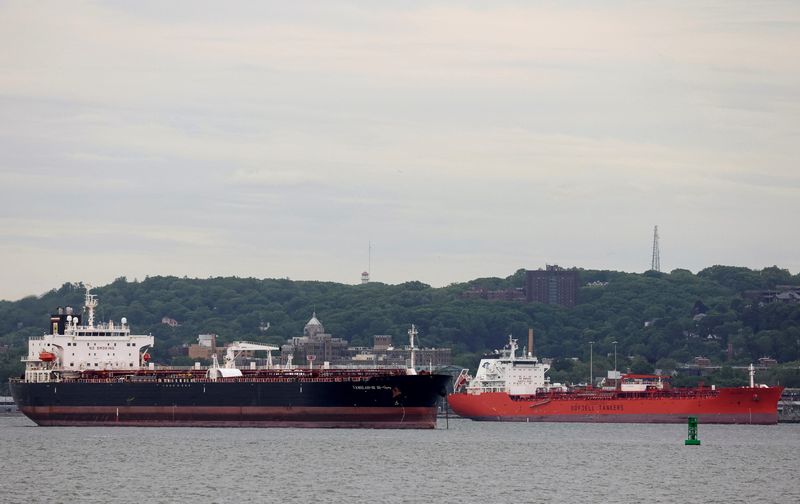Commodities
Oil prices rise on China optimism as investors return after holiday

By Anna Hirtenstein
LONDON (Reuters) -Oil prices rose on Thursday as investors returned for the first trading day of the new year with an optimistic eye on China’s economy and fuel demand after a pledge by President Xi Jinping to promote growth.
futures rose $1.04, or 1.39%, to $75.68 a barrel by 1205 GMT after gaining 65 cents on Tuesday, the last trading day of 2024. U.S. West Texas Intermediate crude was up $1.02, or 1.42%, at $72.74.
Xi’s New Year address on Tuesday said that China would implement more proactive policies to promote growth in 2025.
China’s factory activity grew in December, a Caixin/S&P Global survey showed on Thursday, but at a slower pace than expected in the face of concerns over how tariffs proposed by U.S. President-elect Donald Trump will affect the trade outlook.
The data echoed an official survey released on Tuesday, which showed that China’s manufacturing activity barely grew in December. However, services and construction fared better, with the data suggesting that policy stimulus is trickling into some sectors.
Weaker Chinese data is seen by some analysts as positive for oil prices because it could prompt Beijing to accelerate its stimulus programme.
Traders are returning to their desks and probably weighing higher geopolitical risks and Trump running the U.S. economy red hot against the expected impact of tariffs, said IG market analyst Tony Sycamore.
“Tomorrow’s US ISM manufacturing release will be key to crude oil’s next move,” Sycamore said.
Sycamore said WTI’s weekly chart is winding itself into a tighter range, suggesting that a big move is coming.
“Rather than trying to predict in which way the break will occur, we would be inclined to wait for the break and then go with it,” he added.
Investors are also awaiting weekly U.S. oil stocks data from the Energy Information Administration, which was postponed to Thursday because of the New Year holiday.
oil and distillate stockpiles are expected to have fallen last week while gasoline inventories are expected to have risen, an extended Reuters poll showed on Tuesday. [EIA/S]
October’s oil demand reached the highest level since the COVID-19 pandemic at 21.01 million barrels per day (bpd), up about 700,000 bpd from September, EIA data showed on Tuesday.
Crude output from the world’s top producer rose to a record 13.46 million bpd in October, up 260,000 bpd from September, the report showed.

Oil prices are likely to be constrained near $70 a barrel in 2025, down for a third year after a 3% decline in 2024, with weak Chinese demand and rising global supplies offsetting OPEC+ efforts to shore up the market, a Reuters poll showed.
In Europe, Russia halted gas pipeline exports through Ukraine on New Year’s Day after the transit agreement expired on Dec. 31. The European Union has arranged alternative supply ahead of the widely expected stoppage while Hungary will keep receiving Russian gas via the TurkStream pipeline under the Black Sea.
Commodities
Oil prices rise; U.S. crude inventories plunge, Russia-Ukraine truce eyed
Commodities
India’s Reliance to stop buying Venezuelan oil over US tariffs, sources say
Commodities
Oil prices climb on Venezuela supply worries

 Forex3 years ago
Forex3 years agoForex Today: the dollar is gaining strength amid gloomy sentiment at the start of the Fed’s week

 Forex3 years ago
Forex3 years agoUnbiased review of Pocket Option broker

 Forex3 years ago
Forex3 years agoDollar to pound sterling exchange rate today: Pound plummeted to its lowest since 1985

 Forex3 years ago
Forex3 years agoHow is the Australian dollar doing today?

 Cryptocurrency3 years ago
Cryptocurrency3 years agoWhat happened in the crypto market – current events today

 World3 years ago
World3 years agoWhy are modern video games an art form?

 Commodities3 years ago
Commodities3 years agoCopper continues to fall in price on expectations of lower demand in China

 Economy3 years ago
Economy3 years agoCrude oil tankers double in price due to EU anti-Russian sanctions























